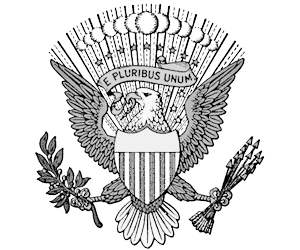|
|
|
|
|
Pop Art artists used simplistic shapes with bright, vivid, vibrant colors often accompanied by bold, dark lines. Pop Art appealed to the younger generation who enjoyed experiencing art on a non-traditional, experiential level. What is Pop Art? Pop Art is a modern art style, a new form of "Popular" art that drew inspiration from cultural icons such as movie stars or popular, mass media imagery as used in comic strips, advertisements and product labels. Artists believed that art could be anything, and made out of anything. When did Pop Art start? Pop Art started in the mid 1950's, gaining in popularity in the 1960's. What are the characteristics of Pop Art? The characteristics of Pop Art include bright, vivid, quirky colors, repetition of shapes, dark bold lines, simplistic shapes and the use of the collage technique. The images were generally presented with a combination of humor, criticism and irony. Who were the main artists of Pop Art? The most famous artists who adopted the Pop Art style were Andy Warhol, David Hockney, Roy Lichtenstein and Peter Blake. Names of other main artists include Eduardo Paolozzi, Jasper Johns and Robert Rauschenberg, Claes Oldenburg, Jim Dine, Tom Wesselmann, Kurt Schwitters, May Wilson, James Rosenquist and Alex Katz.
Pop Art - Famous Artists and their
work
Pop Art was Influenced by
Dadaism Facts about
Pop Art Pop Art emerged in the mid 1950's and flourished in the 1960s in both America and Britain. It was a cultural revolution in which artists moved away from conventions and conformity creating art directly from everyday items, consumer goods, and mass media. Pop artists such as Andy Warhol and Roy Lichtenstein favored realism, using everyday, mundane imagery combined with heavy doses of humor, irony and wit. The movement reflected the changing times and the rise of consumerism, advertising, celebrity, experimentation, pop music and rock and roll. Comic books were enjoying a revival and artists began to make use of panels, balloons (speech bubbles) and characters in their work. Characters such as Batman were extremely popular and the 1960's TV series was produced as a pop-art campy comedy in which cartoon style balloons were interspersed with the plt and the actors. Roy Lichtenstein painted Look Mickey in 1961, based on Mickey Mouse, and created a distinctive comic-strip style which achieved fame with his 1963 work entitled Crying Girl. In "Sweet Dreams Baby!" Lichtenstein created a cartoon character whose movement was emphasized by the word "POW!" The youth counterculture was emerging. Bill Haley, Jerry Lee Lewis, Elvis Presley popularized rock and roll. Television replaced radio as the dominant media outlet and Marilyn Monroe, James Dean and Marlon Brando were the favored movie stars. Andy Warhol created work featuring the celebrities of the era. The image of Marilyn Monroe, based on a publicity photo, is repeated again and again, with variations of color and printing quality. His triple image of Elvis Presley depicts the rock 'n' roll heartthrob as a cowboy, armed and shooting from the hip. Andy Warhol's iconic repeated image of Marlon Brando strongly conveys the sexual appeal of the star in his leather jacket. Andy Warhol, initially from a commercial art background, also created work based on popular American products like Campbell soup cans and Coca-Cola bottles. Warhol frequently used silk-screening and his later drawings were traced from slide projections. Andy Warhol also produced sculptures, his most famous sculpture was his 'Brillo Boxes' created on silk-screened ink on wood replicas of the large, branded cardboard boxes used to hold 24 packages of Brillo soap pads. Jasper Johns was one of the leading forces to the form known as minimalism. Jasper Johns is best known for his painting 'Flag' , which he painted after having a dream of the American flag. He went on to create other images featuring maps, targets, letters and numbers. His distinct style, and its simplicity, had never been seen before and captured the imagination of the public Tom Wesselmann was famous for his "Great American Nude" series and his huge canvas paintings of household objects. Wesselmann also became known for the "Smokers" series, focusing on disembodied presentations depicting close-ups of lips (think Rocky Horror Picture Show) The work of American sculptor Claes Oldenburg featured very large replicas of everyday objects such as typewriters, lipstick and flashlights American artist Jim Dine used repeating themes including those of the body, personal identity and memory. His early images on canvas were extremely unusual as he attached three-dimensional objects such as articles of clothing and garden tools to his work American artist and feminist May Wilson is best known for her collages and her "Ridiculous Portrait" series which included the Statue of Liberty English artist Peter Blake, the "Godfather of Pop Art", was famous for his celebrity-centered album cover for the Beatles "Sgt. Pepper’s Lonely Heart Club Band". James Rosenquist, originally a a billboard painter, took fragmented, odd images and overlapped and combined them to create visual stories on canvas. American painter Robert Rauschenberg used photographs which he transferred to the canvas by means of the silkscreen process. The Psychedelic art movement of the late 1960s followed on from the Pop Art movement. Psychedelic art was inspired by psychedelic experiences induced by taking drugs such as LSD during the Hippie Counterculture era. |
| US American History |
| 1945-1993: Cold War Era |
|
|
|
|
|
First Published2016-04-19 | |||
|
Updated 2018-01-01 |
Publisher
Siteseen Limited
| ||
|
|

